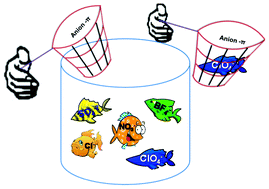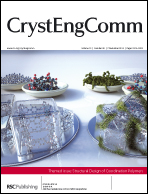A series of coordination compounds (both coordination complexes (CCs) and coordination polymers (CPs)) viz. [Cu(L1)4·(SO4)·(DMSO)]CC1, [(H2O)2(DMSO)Cd(L1)2(μ2SO4)(Cd(L1)2·(SO4)·(DMSO)·(H2O)] CC2, [Cu(L2)2(H2O)·(Cl)2] CC3, [Cu(L2)2(μ-SO4)(H2O)]∝ CP1, [{Cu(L2)4(μ-SiF6)}·3H2O]∝ CP2, [{Cu(L3)4(ClO4)}·ClO4·H2O]·CC4, [{Cu(L3)4(H2O)}·H2O·2BF4] CC5, [{(Cl)Cu(L3)4(μ-Cl)Cu(L3)4}·Cl·H2O] CC6, [{Cu2(L3)4(μ-Cl)2·(Cl)2}·H2O] CC7, [Cu(L3)2(Cl)2] CC8, and [{Cu(L4)4·(H2O)2}·SO4·5H2O] CC9 derived from ligands equipped with pyridyl and pentafluorophenyl/phenyl moieties along with hydrogen bonding backbone (amide/urea) with CuII/CdII metal centers have been synthesized and characterized by single crystal X-ray diffraction (SXRD). Their various fluorous interactions along with hydrogen bonding have been investigated. The results show that almost all the coordination compounds except CC9 studied herein display various fluorous interactions; in one such example i.e. in CC4, anion–πF along with other supramolecular interactions (F⋯F, C–H⋯F) shapes the supramolecular assembly, which is exploited to separate environmentally relevant perchlorate anion from a competing mixture of anions viz. SO42−, NO3−, ClO4−, BF4−, Cl− by following in situ synthesis of the corresponding coordination compound.


 Please wait while we load your content...
Please wait while we load your content...